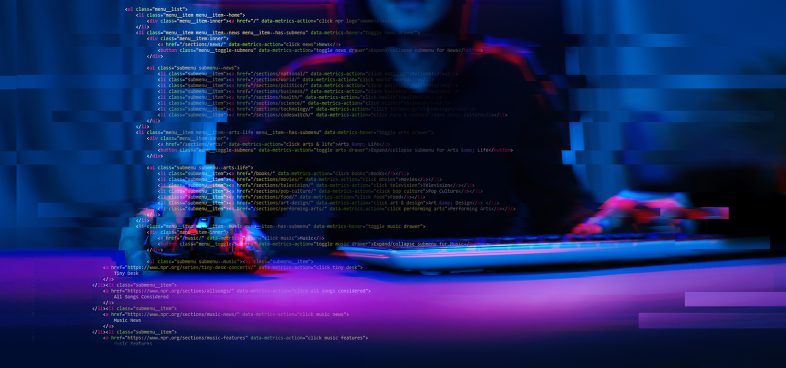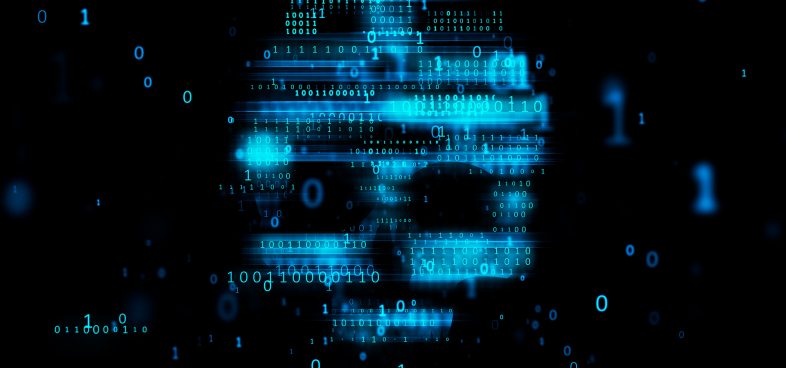Executive Summary
While analyzing infrastructure related to Stately Taurus activity targeting organizations in countries affiliated with the Association of Southeast Asian Nations (ASEAN), Unit 42 researchers observed overlaps with infrastructure used by a variant of the Bookworm malware. We also found open-source intelligence that revealed additional Stately Taurus activity in the region during the same timeframe, including a January 2024 CSIRT CTI post detailing attacks in Myanmar.
The earlier Stately Taurus attacks delivered the PubLoad malware and used the DLL sideloading technique to execute the malware. Stately Taurus commonly uses DLL sideloading as a technique to execute its payloads and Unit 42 believes that the PubLoad malware family is unique to this threat group as well.
Before discovering these overlaps with known Stately Taurus infrastructure, we hadn't associated any threat actor with Bookworm, which we first published about in 2015. After nearly a decade, we can now confidently state that Stately Taurus uses this malware.
Palo Alto Networks customers are better protected through the following products and services:
- Cortex XDR and XSIAM
- Cloud-Delivered Security Services for the Next-Generation Firewall, including Advanced WildFire, Advanced Threat Prevention, Advanced URL Filtering and Advanced DNS Security
If you think you might have been compromised or have an urgent matter, contact the Unit 42 Incident Response team.
| Related Unit 42 Topics | Stately Taurus, Bookworm |
Stately Taurus Ties, Years in the Making
The Stately Taurus activity impacting Myanmar used a legitimate executable signed by an automation organization to load a malicious payload with a filename of BrMod104.dll (2a00d95b658e11ca71a8de532999dd33ddee7f80432653427eaa885b611ddd87). This malicious payload is a variant of PubLoad, which is stager malware that communicates with its command and control (C2) server to obtain a second shellcode-based payload.
This particular PubLoad payload communicates with its C2 server by directly connecting to the IP address 123.253.32[.]15. The payload then issues an HTTP request that looks like that shown in Figure 1.

The HTTP request includes www.asia.microsoft.com within the host field as an attempt to masquerade as a legitimate request associated with the Windows operating system. Also, the URL pattern seen in these HTTP requests appears to be an attempt to mimic legitimate URLs accessed by Windows update, one of which looks like the following:
- http://download.microsoft[.]com/v11/2/windowsupdate/redir/v6-win7sp1-wuredir.cab
We compared the legitimate URL to that used by PubLoad. The PubLoad’s URL uses v6-winsp1-wuredir, which differs from v6-win7sp1-wuredir used by the legitimate Windows update URL.
We used this anomaly along with the rest of the URL structure to pivot to several archive files, described in more detail in the Indicators of Compromise section. These files were likely used in the delivery phase of the threat actor’s operations. Lab52 discussed these archives within their article discussing Mustang Panda’s targeting of Australia in 2023, which provided another linkage between the stated activity and the Stately Taurus actor.
In addition to these archives, we found three older payloads that had not been previously discussed publicly, shown in Table 1. These files communicated with their C2 servers using the same URL structure.
| Compiled | SHA256 | Filename | Debug Symbol Path |
C2 |
| Dec. 23, 2021 | cf61b7a9bdde2a39156d88f309f230a7d44e9feaf0359947e1f96e069eca4e86 | anhlab.exe | C:\Users\hack\Desktop\uuid\uu\Release\uu.pdb | www.fjke5oe[.]com |
| Nov. 9, 2022 | 5064b2a8fcfc58c18f53773411f41824b7f6c2675c1d531ffa109dc4f842119b | ltdis13n.dll | E:\WhiteFile\LTDIS13n\Release\LTDIS13n.pdb | www.fjke5oe[.]com |
| Oct. 26, 2022 | fbc67446daaa0a0264ed7a252ab42413d6a43c2e5ab43437c2b3272daec85e81 | ltdis13n.dll | C:\Users\hack\Documents\WhiteFile\LTDIS13n\Release\LTDIS13n.pdb | update.fjke5oe[.]com |
Table 1. Payloads seen using the same URL pattern for C2 communications as Stately Taurus.
The payloads shown in Table 1 are loaders that contain embedded shellcode formatted and ultimately executed in an interesting way by following these steps:
- Using ASCII or decoded Base64 strings that represent UUID strings
- Calling UuidFromStringA to convert the decoded UUIDs to binary data, each of which represents 16 bytes of shellcode
- Creating a buffer on the heap using HeapCreate and HeapAlloc
- Copying shellcode to buffer on the heap
- Using a callback function of a legitimate API function, such as EnumChildWindows or EnumSystemLanguageGroupsA to execute the shellcode on the heap
While the process to load and run shellcode seems quite unique, the NCC group thoroughly documented it in their January 2021 analysis of a macro-enabled document the Lazarus group used in Operation In(ter)ception. We do not believe Stately Taurus is related to Operation In(ter)ception. However, the NCC group included source code of the shellcode loading process written in C within their article. We believe Stately Taurus developers used this as a basis to create the three samples in Table 1 above.
The decoded shellcode decrypts and loads dynamic-link libraries (DLLs) that comprise the Bookworm malware, which we will discuss further in the next section. The Bookworm module responsible for communicating with its C2 server will issue HTTP POST requests to either www.fjke5oe[.]com or update.fjke5oe[.]com with the URL path previously seen in the PubLoad sample, as shown in Figure 2.

Overlaps Between Bookworm and ToneShell
While analyzing the Bookworm samples, we found a variant of the ToneShell backdoor (b382cc85eee95a620fc11370309ff76de9a3bcaefb645790434d8251a3b9fce1) that had the same debug symbol path as the Bookworm loader. Its developers compiled the two samples 8 weeks apart.
The ToneShell variant was compiled Sep. 1, 2022, and the Bookworm sample was compiled on Oct. 26, 2022. The close proximity in compile times and the shared debug path between the two samples suggests that the same developer could have created samples of the two malware families. The debug path seen in both the ToneShell and Bookworm variants was C:\Users\hack\Documents\WhiteFile\LTDIS13n\Release\LTDIS13n.pdb.
In addition to this debug symbol overlap, we also observed an infrastructure overlap. This overlap included the Bookworm samples shown in Table 1 and the ToneShell variant used in the targeted attack on the government organizations in Southeast Asia that we discussed in our August 2023 article.
The Bookworm payloads in Table 1 communicate with either www.fjke5oe[.]com or update.fjke5oe[.]com, both of which resolved to 103.27.202[.]80. The latter URL switched to 103.27.202[.]68 in December 2022.
Earlier in January 2022, the IP address 103.27.202[.]68 resolved to the domain www.uvfr4ep[.]com. This domain hosted the C2 server for a ToneShell sample (a08e0d1839b86d0d56a52d07123719211a3c3d43a6aa05aa34531a72ed1207dc) installed by Stately Taurus at the Southeast Asian government compromise discussed in our previous post.
This reinforces the link between the two malware families and their use by Stately Taurus. Further strengthening this connection, the ToneShell C2 domain www.uvfr4ep[.]com also resolved to 103.27.202[.]87, an IP address linked to the known Bookworm C2 domain www.hbsanews[.]com.
We also found a recent ToneShell sample compiled on Jan. 24, 2024, that used the UUID format to represent its shellcode. This sample also used the same publicly available source code created by the NCC group as the Bookworm samples mentioned in the previous section.
The main difference between the ToneShell loader using UUIDs from the Bookworm samples is the legitimate API functions whose callback functions they used to execute the shellcode. The Bookworm samples used either EnumSystemLanguageGroupsA or EnumChildWindows to run their shellcode from the API function’s callback function, while the ToneShell sample used the legitimate API EnumSystemLocalesA instead.
Table 2 shows the ToneShell and Bookworm samples that used the UUID technique to represent their respective shellcode, along with the API function they use to run the shellcode. This technique is not unique to this actor as the source code of the technique is publicly available. We include it in our analysis to increase our confidence in the relationship between Bookworm and ToneShell. It’s believed that only Stately Taurus uses ToneShell.
| SHA256 | Family | Callback Function Called By | UUID Format |
| ab9d8f1021f2a99c74aa66f8ddb52996ac2337da9de2676d090b87e19ce93033 | ToneShell | EnumSystemLocalesA | ASCII |
| cf61b7a9bdde2a39156d88f309f230a7d44e9feaf0359947e1f96e069eca4e86 | Bookworm | EnumSystemLanguageGroupsA | ASCII |
| 5064b2a8fcfc58c18f53773411f41824b7f6c2675c1d531ffa109dc4f842119b | Bookworm | EnumChildWindows | Base64 |
| fbc67446daaa0a0264ed7a252ab42413d6a43c2e5ab43437c2b3272daec85e81 | Bookworm | EnumChildWindows | Base64 |
Table 2. ToneShell and Bookworm samples using UUID to represent their shellcode and the API functions used to run the shellcode.
Updates to Bookworm
In our first public post on Bookworm, we did a thorough analysis of the malware family and its unique modular design. We will reference this analysis in this section, and we suggest referencing the previous post for additional context.
At a high level, the Bookworm malware has had minimal changes from the original samples analyzed in 2015 and those mentioned in the previous section. Its developers compiled these samples in late 2021 and in the fall of 2022.
In our original analysis, the Bookworm family used DLL sideloading to load an actor-developed DLL called Loader.dll to decrypt and run shellcode within a file named readme.txt. In contemporary Bookworm samples, the malware no longer uses the Loader.dll and readme.txt files. Rather, the Bookworm shellcode within readme.txt is now the shellcode represented as UUID parameters as discussed in the previous sections of this post.
The reuse of the shellcode in a different form factor shows the flexibility of Bookworm. This flexibility allows the actor to continue using this malware family years after public exposure.
The Bookworm malware family consists of multiple modules, each of which support the main Leader.dll module by providing additional functionality. Older Bookworm modules had an exported function named ProgramStartup that the Leader module would call to obtain a data structure that acted as a list of available functions within the module.
The Leader.dll module would use this data structure to call specific functions within the supporting modules to carry out specific functionality. Contemporary Bookworm modules no longer have the ProgramStartup exported function. Instead, each module’s DllEntryPoint function returns a pointer to a function that is identical to the ProgramStartup function, which the Leader module will call to obtain the data structure with the module’s functions.
Figure 3 shows a comparison of the original ProgramStartup function for the AES.dll module on the right. The function returned by the DllEntryPoint of the contemporary AES.dll module is on the left.

Besides the lack of a ProgramStartup exported function, the Bookworm modules themselves are very similar from a functionality perspective. The module identifier numbers used by Bookworm’s loader line up exactly between the original Bookworm modules and their contemporary counterparts. However, the malware authors changed all but two of the DLL names extracted from the module’s export address table (EAT) between old and new Bookworm modules.
For instance, while the Leader.dll and Coder.dll module names remained the same from old to new Bookworm, the developers changed from legible module names like Resolver.dll to illegible names like dafdsafdsaa3. The developer also removed the timestamps from the EAT as well to make it difficult to determine when they created the module.
However, a notable exception involves the Coder.dll module that had a timestamp of 2017-08-04 05:24:49. This suggests that the contemporary Bookworm modules are using a module created in August 2017.
Table 3 shows the modules within contemporary Bookworm samples with their module identifier, module name and the original name of the module compared to those of older Bookworm samples.
| SHA256 | Current Module Name | Related Bookworm Module | Current Module ID |
| f7b024196ac50bd0f7ed362a532e83edf154bb60fcf24d0ab5297d0c6beaca0f | Leader.dll | Leader.dll | 0x0 |
| bbf12ee2cd71dbcf2948adf64f354ad7c69d6b6ff0b78ea76b3df2d02b08ed0f | dafdsafdsaa3 | Resolver.dll | 0x1 |
| fa739724a4b6f7a766a2d7695d7da7b33a6ac834672c1b544dd555c93600a637 | fjdasljguafa | KBLogger.dll | 0x5 |
| d7dbfb2b755418842fea4fca5628f0b36bbd128a71ddcd858b4b3c67ba78f516 | Coder.dll | Coder.dll | 0xA |
| 6804b10aefe8fdb2b33ecf3bc5a93f49413ef66001b561e6fc121990d703d780 | 999999.000 | Digest.dll | 0xB |
| 72aa72a4a4bdb09146c587304c6639eae65900cb2ea26911540a77d1f9b7acf6 | AES.dll | AES.dll | 0xC |
| fb25a69ffc18b79ee664462e0717cf5e70820948d5d2ca4c192fac8b1ede91c2 | yyrtytr.565 | Network.dll | 0xE |
| dcc349a1b624f6b949f181a7dd859a82715b4d3b6c37c7e5be1b729cd8e6f01f | feareade | HTTP.dll | 0x13 |
| 51bf329ba04a042789bad3b395092488a3d89130dc72818985cde11fb85f8389 | fdafgravfdrafra | WinINetwork.dll | 0x17 |
Table 3. Contemporary Bookworm modules, their names and the modules they relate to in original Bookworm samples.
Table 3 shows that none of the more recent Bookworm samples have the Mover.dll module, which our previous post described as being responsible for moving Bookworm files to a new location upon initial installation. While this module is no longer included as part of the installation, the main module (Leader.dll) in contemporary Bookworm samples contains artifacts that suggest it still supports use of a Mover.dll module. For instance, current Leader.dll modules still attempt to resolve an exported function named iar, which is the exported function name within the original Mover.dll modules that carries out its functionality.
Conclusion
Stately Taurus remains highly active in targeting organizations associated with ASEAN. Based on overlaps sourced from this recent activity to the Bookworm malware family, Unit 42 has associated previously unattributed attacks on government organizations in Southeast Asia from nine years ago.
Developers appear to have created these related Bookworm samples in 2021 and 2022, which show only slight changes from the core components from the Bookworm samples analyzed in 2015. Bookworm’s use of shellcode to load additional modules allows the actors to package it in different form factors, which were the main difference seen between samples from 2015 and 2021-2022.
The Bookworm malware has proven to be very versatile and a threat actor can repackage it to meet their operational requirements. This versatility suggests Bookworm will show up again in future attacks, which reiterates the same parting words from the conclusion from the Bookworm Trojan: A Model of Modular Architecture article from 2015. However this time we can reference the threat actor by name:
“We believe that it is likely that Stately Taurus will continue developing Bookworm and will continue to use it for the foreseeable future.”
Palo Alto Networks customers are better protected from the threats discussed above through the following products:
- Advanced WildFire cloud-delivered malware analysis service accurately identifies the known samples as malicious.
- Advanced URL Filtering and Advanced DNS Security identify known URLs and domains associated with this activity as malicious.
- Next-Generation Firewall with the Advanced Threat Prevention security subscription can help block the attacks with best practices. Advanced Threat Prevention has an inbuilt machine learning-based detection that can detect exploits in real time.
- Cortex XDR and XSIAM are designed to:
- Prevent the execution of known malicious malware, and also prevent the execution of unknown malware using Behavioral Threat Protection and machine learning based on the Local Analysis module.
- Protect against credential gathering tools and techniques using the new Credential Gathering Protection available from Cortex XDR 3.4.
- Protect from threat actors dropping and executing commands from web shells using Anti-Webshell Protection, newly released in Cortex XDR 3.4.
- Protect against exploitation of different vulnerabilities including ProxyShell and ProxyLogon using the Anti-Exploitation modules as well as Behavioral Threat Protection.
- Detect post-exploit activity, including credential-based attacks, with behavioral analytics, through Cortex XDR Pro.
If you think you may have been compromised or have an urgent matter, get in touch with the Unit 42 Incident Response team or call:
- North America: Toll Free: +1 (866) 486-4842 (866.4.UNIT42)
- UK: +44.20.3743.3660
- Europe and Middle East: +31.20.299.3130
- Asia: +65.6983.8730
- Japan: +81.50.1790.0200
- Australia: +61.2.4062.7950
- India: 00080005045107
Palo Alto Networks has shared these findings with our fellow Cyber Threat Alliance (CTA) members. CTA members use this intelligence to rapidly deploy protections to their customers and to systematically disrupt malicious cyber actors. Learn more about the Cyber Threat Alliance.
Indicators of Compromise
Bookworm Samples
- cf61b7a9bdde2a39156d88f309f230a7d44e9feaf0359947e1f96e069eca4e86
- fbc67446daaa0a0264ed7a252ab42413d6a43c2e5ab43437c2b3272daec85e81
- 5064b2a8fcfc58c18f53773411f41824b7f6c2675c1d531ffa109dc4f842119b
- 243b92959cd9aa03482f3398fbe81b4874c50a5945fe6b0c0abb432a33db853f
- a0887fa90f88dd002b025a97b3a57e4fdb7f5fdd725490d96776f8626f528ef2
- a2452456eb3a1a51116d9c2991aae3b0982acc1a9b30efee92a4f102dc4d2927
- 3e137da41cb509412ee230c6d7aac3d69361358b28c3a09ec851d3c0f3853326
- fdad627a21a95ea2a6136c264c6a6cc2f0910a24881118b6eabc2d6509dc8dd7
- ab54af1dbe6a82488db161a7f57cd74f2dd282a9522587f18313b4e9835dc558
- 3cef0b5f069cc1d15d36aa83d54d2a7be79b29b02081b6592dd4714639ad0a66
- 43de1831368e6420b90210e15f72cea9171478391e15efdd608ad22fe916cea8
- 2bae8b07f5098e1ca8fb5a5776eb874072ace4e19734cba4af4450eeccde7f89
- a229a2943cf8d1b073574f0c050ca06392d0525b2028f4b4b04d1e4b40110c66
- 9192a1c1ab42186a46e08b914d66253440af2d2be6b497c34fe4b1770c3b5e01
- 4a92fa725adc57d7b501f33e87230a8291cf8ad22d4d3a830293abcc0ac10d12
- da8ef50fe5e571d0143a758c7c66bb55653f1f2d04f16464fc857226441d79b2
- f0df09513dcf292264b3336269952c7e9ff685df8180a2035bee9f3143b36609
Bookworm Modules
| SHA256 | Module |
| fa739724a4b6f7a766a2d7695d7da7b33a6ac834672c1b544dd555c93600a637 | KBLogger.dll |
| fb25a69ffc18b79ee664462e0717cf5e70820948d5d2ca4c192fac8b1ede91c2 | Network.dll |
| bbf12ee2cd71dbcf2948adf64f354ad7c69d6b6ff0b78ea76b3df2d02b08ed0f | Resolver.dll |
| dcc349a1b624f6b949f181a7dd859a82715b4d3b6c37c7e5be1b729cd8e6f01f | HTTP.dll |
| 51bf329ba04a042789bad3b395092488a3d89130dc72818985cde11fb85f8389 | WinINetwork.dll |
| d7dbfb2b755418842fea4fca5628f0b36bbd128a71ddcd858b4b3c67ba78f516 | Digest.dll |
| 6804b10aefe8fdb2b33ecf3bc5a93f49413ef66001b561e6fc121990d703d780 | Digest.dll |
| 72aa72a4a4bdb09146c587304c6639eae65900cb2ea26911540a77d1f9b7acf6 | AES.dll |
| f7b024196ac50bd0f7ed362a532e83edf154bb60fcf24d0ab5297d0c6beaca0f | Leader.dll |
Bookworm Infrastructure
- www.fjke5oe[.]com
- update.fjke5oe[.]com
- www.i5y3dl[.]com
- www.hbsanews[.]com
- www.b8pjmgd6[.]com
- www.zimbra[.]page
- www.ggrdl4[.]com
- www.gm4rys[.]com
Archives Related to PubLoad Using V6-winsp1-wuredir
|
SHA256 |
Filename |
C2 |
| b7e042d2accdf4a488c3cd46ccd95d6ad5b5a8be71b5d6d76b8046f17debaa18 | analysis of the third meeting of ndsc.zip | 123.253.32[.]15 |
| 41276827827b95c9b5a9fbd198b7cff2aef6f90f2b2b3ea84fadb69c55efa171 | april 27 updated party list.zip | 123.253.35[.]231 |
| 167a842b97d0434f20e0cd6cf73d07079255a743d26606b94fc785a0f3c6736e | notice re uec, (04-25-2023 day).zip | 123.253.35[.]231 |
| 4fbfbf1cd2efaef1906f0bd2195281b77619b9948e829b4d53bf1f198ba81dc5 | biography of senator the hon don farrell.zip | 123.253.35[.]231 |
| 4e8717c9812318f8775a94fc2bffcf050eacfbc30ea25d0d3dcfe61b37fe34bb | analysisofthethirdmeetingofndsc.zip | 123.253.32[.]15 |
| 98d6db9b86d713485eb376e156d9da585f7ac369816c4c6adb866d845ac9edc7 | 0228-2023.zip | 123.253.35[.]231 |
| a02766b3950dbb86a129384cf9060c11be551025a7f469e3811ea257a47907d5 | national security priority programs.zip | 123.253.35[.]231 |
| 4b6f0ae4abc6b73a68d9ee5ad9c0293baa4e7e94539ea43c0973677c0ee7f8cb | nsd.zip | 123.253.32[.]15 |
| eb176117650d6a2d38ff435238c5e2a6d0f0bb2a9e24efed438a33d8a2e7a1ea | SAC has some instructional requirements for the general election(2).zip | 123.253.35[.]231 |
Additional Resources
- Stately Taurus Targets the Philippines As Tensions Flare in the South Pacific – Unit 42, Palo Alto Networks
- Cyberespionage Attacks Against Southeast Asian Government Linked to Stately Taurus, Aka Mustang Panda – Unit 42, Palo Alto Networks
- Bookworm Trojan: A Model of Modular Architecture – Unit 42, Palo Alto Networks
- Threat Actor Groups Tracked by Palo Alto Networks Unit 42 – Unit 42, Palo Alto Networks
- Hunting for Unsigned DLLs to Find APTs – Unit 42, Palo Alto Networks












 Get updates from Unit 42
Get updates from Unit 42